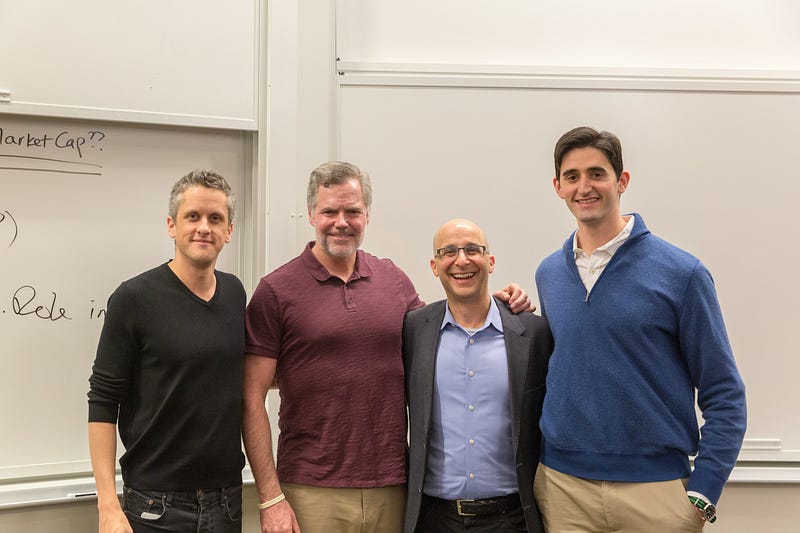This article was written by XSeed Partner, Robert Siegel, and appeared in the Industrialist’s Dilemma.
When we first met Jim Murren and the leadership team of MGM Resorts, we were struck by the sheer physical size and scope of the MGM experience. The hotels are big, the shows are big, the casinos are big and the conventions are big, too.
And the visions of where the company intends to go in the future are also big.
Ranging from bringing professional hockey and football teams to Las Vegas to becoming an increasingly larger global entertainment presence to delivering an evolving experience for the new generation of people seeking fun and frivolity, the MGM footprint is vast and impressive.
As we dug into exploring the transformation presented by digital, we found a company just beginning its journey that is confronting a wide variety of options and paths — the impact and outcome of which are as broad and mixed as any company we have studied so far.

We Are Spirits in the Material World
One of the unique aspects of MGM’s offerings is the sheer physicality of their products. The hotels and casinos are collections of stimuli that provide sensory overload to guests. The shows are over the top. The restaurants serve world-class food. The nightclubs play loud thumping music all night long. And the conventions are able to host hundreds of thousands of people at one time.
At one level, the introduction of digital entertainment into the physical for MGM runs the risk of separating customers from the one thing that MGM Resorts uniquely brings to its guests — a physical escape from the mundane monotony of everyday life. The MGM adventure is meant to transport people away from their normal work and personal lives to locales of fantasy and fun.
The introduction of digital entertainment, if not done well, could actually undercut the very reason that people go to MGM properties to begin with — to be taken to a creative location that strokes every aspect of one’s senses. Whether watching the famous Bellagio fountains or admiring the athleticism of the acrobats in a show by Cirque du Soleil, the ability to be physically present with groups of others around these overwhelming visual and audio cues is one of the skills at which MGM excels. The idea of enticing or tethering people to digital displays is a double-edged sword — by introducing more digital entertainment experiences, the company runs the risk of undermining that which makes MGM properties so special and unique.
While the students debated the nature of how to bring digital technologies into MGM’s entertainment, the idea of using digital solutions for better and more efficient transactions also received extensive discussion.
On the one hand, a key benefit of a strong set of digital solutions is the ability to have closer contact with one’s customers in order to better understand their wishes and also to have a direct line of communication for new and better products and services.
On the other hand, MGM has driven to empower its workforce (of which over 90% is paid hourly and is on the front lines dealing with people) to solve any problems by providing solutions in a manner that delights the company’s customers. In this context, the idea of high-touch customer engagement and a personal touch is a key competitive advantage in order to keep customers happy.
The risk of too much digital automation, however, is losing the “white glove experience” that can be a key appealing component of a customer’s enjoyment at an MGM property. Perhaps more so than many firms we have studied, MGM must be sure not to lose the intimacy that comes with its personal (physical/analog) services, while figuring out how to take advantage of digital technologies that increase customer touch and the ability to sell additional goods through closer engagement.
Where to Start?
When the students were asked where Murren and crew (and especially MGM’s new Chief Digital Officer) should focus their energies, the lack of consensus was a telling insight into the company’s digital challenge.
Some believed the company needs to worry about experiences offered by companies like Airbnb that might pull people away from Las Vegas and other MGM destinations. Still other students wondered if MGM should enter the digital content business in the event that the virtual world becomes a viable and compelling entertainment alternative to the physical. Still others believed that MGM should partially return to its roots and look at real estate development more broadly to enable digital entertainment experiences and use a wider footprint of locales as “tasters” that draw people to Las Vegas, Macau, etc. to receive an even richer and over-the-top entertainment undertaking.
Some thought all of these solutions were too complex, and that a simple one is right in front of the company — focus on both sports and eSports for new entertainment enjoyment. The former is well on its way to increasing in Las Vegas, and the latter can ride the growing wave of eSports entertainment (and gaming).
Of all the companies we have explored so far, MGM offered some of our most unique observations — digital is coming, but how and in what ways is just beginning to be understood. In fact, the biggest challenge facing management may be to set the right priorities in a world of almost endless possibilities — both on the actual products and services that are offered, and also on how automation and digitization can be blended with physical experiences.
